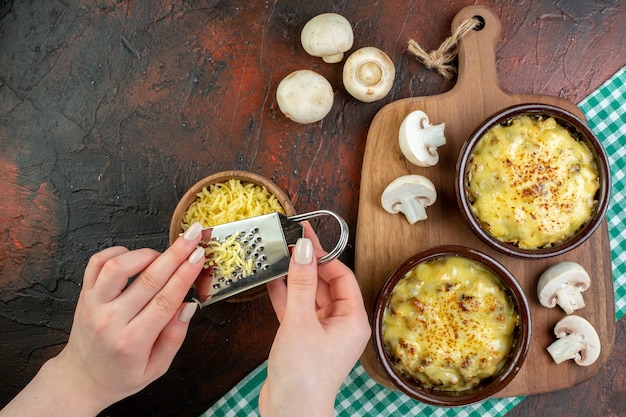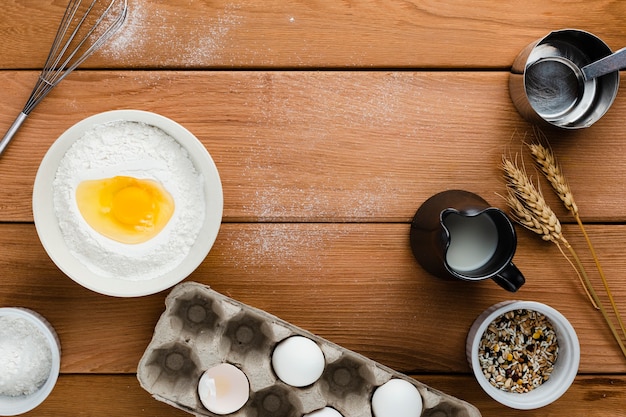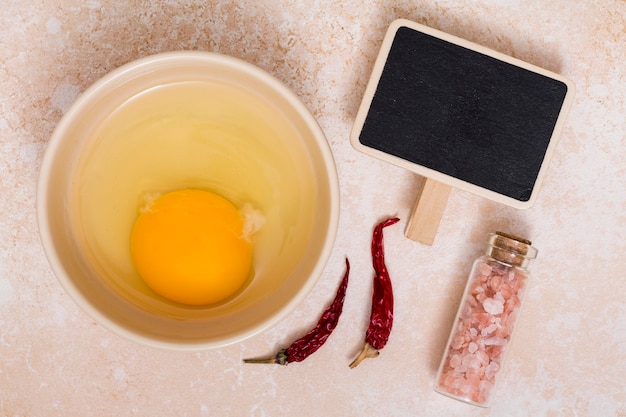Ah, the dippy egg. A simple pleasure, a culinary classic, a breakfast (or lunch, or even dinner!) staple. There's something undeniably satisfying about that golden yolk, oozing onto your toast, a symphony of creamy texture and rich flavor. But getting that perfect dippy egg, where the white is set just right and the yolk is gloriously runny, can be a bit of a culinary gamble.
I've been there, trust me. I've had my share of rubbery whites and hard-boiled yolks. It's a real heartbreaker, especially when you're craving that perfect dippy egg experience. Over the years, I've learned a few tricks and tips that have helped me master the art of the dippy egg. And let me tell you, it's not as complicated as you might think. It's all about understanding the science behind it and knowing exactly how long to cook those little beauties.
Part 1: Unraveling the Science of a Perfect Dippy Egg

The secret to a truly perfect dippy egg lies in understanding how heat affects the protein in the egg. When you cook an egg, the protein in the white starts to coagulate, transforming from a liquid to a solid. The yolk, however, takes a bit longer to set because it has a higher fat content. The goal, then, is to cook the white just enough to hold its shape, but not so much that it becomes rubbery, while keeping the yolk beautifully runny, a silky smooth delight.
Factors Influencing Your cooking time
Now, there's no one-size-fits-all answer to the "how long to cook" question. It depends on a few key factors. Consider these:
- egg size: Just like with baking, smaller eggs cook faster than larger ones. A small egg will be ready before a jumbo egg.
- Freshness: fresh eggs tend to take a little longer to cook than older eggs. This is because fresher eggs have a higher water content, which needs to be evaporated during cooking. It's a subtle difference, but it can make a difference in your final result.
- Cooking Method: The way you cook your egg affects the cooking time. Boiling, poaching, steaming, and even microwaving each produce slightly different results due to the way heat is transferred. We'll explore these methods in detail later.
- Desired Doneness: Do you want a soft yolk, a slightly runny yolk, or a firm yolk? Your preferred level of doneness will determine how long you cook your eggs.
Defining the Ideal Dippy Egg
The perfect dippy egg, in my humble opinion, is one where the white is set, but still tender, and the yolk is a luscious, vibrant yellow, flowing like a silky smooth liquid. This is what I call the "sweet spot" of dippy egg perfection.
Picture this: You carefully slice the egg in half, and the white holds its shape, firm enough to stand up to your dipping adventures, but not so firm that it's rubbery. The yolk, meanwhile, spills out beautifully, a rich, golden pool of pure deliciousness, ready to coat your toast. You want it to be the star of the show, not a stiff, overcooked mess.
Part 2: The Boiling Method: A Classic for a Reason

Boiling is the most common and perhaps simplest method for cooking dippy eggs. It's a tried and true technique that produces consistently good results, making it a favorite among cooks of all skill levels.
The Boiling Method: Step-by-Step
- Fill a saucepan with enough water to cover the eggs by about an inch. Don't overcrowd the pan; give the eggs some space to move around freely. This will help ensure they cook evenly and prevent them from sticking together.
- Bring the water to a rolling boil. You want the water bubbling vigorously, not just simmering. This ensures a consistent heat transfer, which is essential for even cooking.
- Gently lower the eggs into the boiling water using a spoon. You can also use a slotted spoon, which prevents the eggs from cracking as they enter the hot water.
- Reduce the heat to a simmer. This will prevent the water from boiling too violently, which could cause the eggs to crack. You want a gentle simmer, not a raging boil.
- Cook the eggs for the desired time. This is where your understanding of egg size, freshness, and desired doneness comes into play. We'll get into specific cooking times in a bit.
- Carefully remove the eggs from the water using a slotted spoon. Immediately place them in a bowl of ice water to stop the cooking process. This helps to prevent the yolks from overcooking and keeps the whites tender.
- Gently tap the eggs on a flat surface to crack the shell. Peel them under cold running water, removing the shell carefully. The cold water helps to make the peeling process easier.
- Serve your perfect dippy eggs immediately. They're best enjoyed fresh, as the yolk will start to thicken over time, losing some of its luxurious texture.
Cooking Times for Different Levels of Doneness: A Guide
Here's a general guideline for cooking times for different levels of doneness, assuming you're using medium-sized eggs:
| Desired Doneness | Cooking Time (minutes) |
|---|---|
| Very Soft Yolk | 2-3 |
| Soft Yolk | 3-4 |
| Slightly Runny Yolk | 4-5 |
| Firm Yolk | 6-7 |
Keep in mind, these are just guidelines. Experimentation is key! The best way to find the perfect cooking time for your taste is to try it out for yourself. Don't be afraid to adjust the time a bit depending on your personal preferences.
Part 3: The Poaching Method: A Gentle Touch for Delicate Eggs

For those who prefer a more delicate texture, poaching is an excellent option. It's a bit more hands-on than boiling, but the results are worth the effort. Poaching produces eggs with a silky smooth white and a perfectly runny yolk, a true delight for the senses.
The Poaching Method: Step-by-Step
- Fill a saucepan with about 2 inches of water. Add a splash of vinegar to the water. This helps the egg whites coagulate more quickly and prevents them from spreading too much, creating a more compact, elegant egg.
- Bring the water to a gentle simmer. You want the water to be just bubbling gently, not rolling. A gentle simmer ensures that the heat is distributed evenly and prevents the eggs from breaking apart.
- Crack an egg into a small bowl or ramekin. Carefully slide the egg into the simmering water. Don't worry if the egg white starts to swirl a bit, it's perfectly normal.
- Poach the egg for 3-4 minutes, or until the white is set and the yolk is still runny. You can gently swirl the water around the egg to help it cook evenly, but be gentle!
- Carefully remove the egg from the water using a slotted spoon. Place it on a paper towel to drain off any excess water. This will prevent the egg from becoming soggy.
- Serve your perfectly poached egg immediately. Enjoy it on toast, in a salad, or as a topping for your favourite dish. poached eggs are wonderfully versatile.
Tips for Poaching Perfection
- Use fresh eggs. Fresh eggs will hold their shape better during poaching, resulting in a more beautifully formed egg.
- Don't overcrowd the pan. Give each egg enough space to cook properly, preventing them from sticking together and ensuring they cook evenly.
- Keep the water simmering gently. A rolling boil will cause the egg to break apart, ruining your carefully poached masterpiece.
- Use a slotted spoon to remove the egg. This will help prevent the egg from breaking apart as you lift it from the water.
- Pat the egg dry before serving. This will help prevent the egg from becoming soggy and will ensure a crisp, clean presentation.
Part 4: The Steaming Method: A Gentle Touch for Delicate Eggs
Steaming is another gentle method for cooking eggs, perfect for those who prefer a very soft yolk and a slightly more delicate texture. It's also a good option for those who want to avoid the "sulphury" smell that can sometimes occur when boiling eggs.
The Steaming Method: Step-by-Step
- Fill a saucepan with about an inch of water. Add a steamer basket to the saucepan and bring the water to a boil.
- Crack the egg into a small bowl or ramekin. Carefully pour the egg into the steamer basket.
- Steam the egg for 4-5 minutes, or until the white is set and the yolk is still runny. You can use a thermometer to check the temperature of the yolk; it should be around 145°F (63°C) for a soft, runny yolk.
- Carefully remove the egg from the steamer basket. Serve immediately, enjoying the delicate texture and the absence of any sulphury overtones.
Part 5: The Microwave Method: Quick and Easy (But Not Always Perfect)
Now, let's talk about the microwave. It's a true lifesaver when you're short on time and craving a quick egg fix. However, it's not always the most reliable method for achieving that perfect dippy egg. It can be tricky to get the timing just right, and uneven heat distribution can lead to an overcooked white and an undercooked yolk.
The Microwave Method: Step-by-Step
- Crack an egg into a microwave-safe bowl. Add a tablespoon of water to the bowl. This helps to create steam and prevents the egg from drying out.
- Cover the bowl with a microwave-safe lid or plastic wrap. Make sure there are a few small holes in the plastic wrap to allow steam to escape. This prevents the egg from exploding in the microwave, a rather unpleasant experience.
- Microwave the egg on high for 30-45 seconds. The cooking time will vary depending on the power of your microwave. It's best to start with 30 seconds and then add 10-second increments until your egg reaches your desired level of doneness.
- Carefully remove the egg from the microwave. Let it cool slightly before peeling. This will help to prevent the egg from being too hot to handle.
- Enjoy your microwaved egg! It's not always the most elegant, but it's a quick and easy option when you're in a hurry.
The Challenges of Microwaving Eggs
While convenient, microwaving eggs has a few drawbacks. The heat distribution can be uneven, leading to an overcooked white and an undercooked yolk. Also, it doesn't give you the same delicate texture as boiling or poaching. But, if you're in a pinch and need a quick egg fix, it's a decent option, though the results are not always stellar.
Part 6: The Doneness: How to Tell If Your Egg is Ready
So, how do you know when your egg is cooked to your liking? It's all about observing the visual cues and, dare I say, feeling your way through the process.
- The White: The white should be set, but still slightly tender. It shouldn't be rubbery or dry. A properly cooked white will hold its shape, but not be tough or difficult to cut.
- The Yolk: The yolk should be a vibrant yellow and should flow like a liquid when you slice the egg in half. You can also gently press on the top of the egg; if it feels springy, the yolk is still runny. A firm yolk indicates overcooking.
- The Texture: The egg should be smooth and creamy. The white should be firm enough to hold its shape, but not so firm that it's difficult to cut. The overall texture should be pleasing, not dry or rubbery.
Overcooked vs. Undercooked: The Telltale Signs
If the white is rubbery or the yolk is hard, you've overcooked the egg. You've gone past that sweet spot we talked about. If the white is still runny or the yolk is completely liquid, you've undercooked it. Don't worry, it's a learning curve! Experimentation is your friend here. Don't be afraid to try different cooking times and find what works best for you.
Part 7: Tips for Perfectly Cooked Dippy Eggs
Here are a few extra tips to help you achieve dippy egg perfection every time:
- Use fresh eggs. Fresher eggs are easier to peel and have a more consistent texture. They also hold their shape better during cooking.
- Don't overcook the eggs. Overcooked eggs will have a rubbery white and a hard yolk, a far cry from the creamy, dreamy texture we're aiming for.
- Stop the cooking process immediately after removing the eggs from the water. This will help to prevent the yolk from becoming too firm and keep the whites tender.
- Peel the eggs carefully. Gently tap the shell to crack it and peel it under cold running water. This will help to prevent the yolk from sticking to the shell.
- Use a sharp knife to slice the egg in half. This will ensure a clean cut and prevent the yolk from spilling out, keeping your dippy egg looking pristine.
- Serve your dippy eggs immediately. They're best eaten fresh, as the yolk will start to thicken over time, losing its beautiful flow and texture.
Part 8: Dippy Egg Combinations: Beyond the Basics
Okay, so you've mastered the art of the perfect dippy egg. Now, let's talk about all the delicious ways you can enjoy it!
- The Classic: Dippy egg on toast with salt and pepper. Simple, yet undeniably satisfying. The ultimate dippy egg experience.
- The Savoury: Add a dollop of mashed avocado, chopped tomatoes, or a sprinkle of smoked salmon for a more flavourful experience. This is where you can get creative and personalize your dippy egg.
- The Sweet: For a sweet treat, try dippy egg with a sprinkle of sugar or a drizzle of honey. It's a surprisingly delicious combination, especially if you have a sweet tooth.
- The Spicy: Add a pinch of chilli flakes or a dollop of sriracha sauce for a bit of heat. This is for those who like a bit of a kick with their dippy egg.
- The Healthy: Top your toast with a dippy egg and a handful of fresh spinach or a slice of grilled mushrooms for a nutritious and flavourful breakfast or lunch. A perfect balance of taste and nutrition.
My Favourite Dippy Egg Combination:
Personally, I'm a big fan of a classic dippy egg on toast with a sprinkle of Maldon sea salt and a grind of freshly cracked black pepper. The saltiness of the Maldon and the pepper add a touch of complexity to the rich, creamy yolk. It's simple, yet absolutely divine. But feel free to get creative and experiment with different toppings! That's the beauty of the dippy egg. There are no rules, just endless possibilities. So, have fun and enjoy!
FAQs
1. What if my eggs are too fresh?
If your eggs are super fresh, they might take a little longer to cook. You can test them by gently pressing the top of the egg; if it feels springy, it needs a bit more time. You might need to add a minute or two to the cooking time, but it's better to err on the side of caution and avoid overcooking.
2. Can I use older eggs for dippy eggs?
Absolutely! In fact, older eggs tend to cook a bit faster. Just be careful not to overcook them, as the yolk can become too firm. Older eggs are a little less delicate and can handle a bit more heat.
3. What if I don't have vinegar for poaching?
You can still poach eggs without vinegar. The vinegar helps to keep the whites together, but it's not essential. Just make sure the water is simmering gently and not rolling. The key is to keep the water temperature consistent for optimal results.
4. What if my eggs crack while boiling?
Don't panic! A cracked egg won't necessarily ruin your dippy egg. Just make sure you lower the eggs into the boiling water gently to minimize the risk of cracking. If an egg does crack, add a teaspoon of salt to the water. This will help to prevent the egg white from spreading too much, keeping the egg intact.
5. How do I make sure my dippy eggs are safe to eat?
The yolk should be cooked through to a temperature of at least 145°F (63°C) to kill any potential bacteria. If the yolk is still runny, it's perfectly safe to eat. But, if you're pregnant, it's best to avoid runny yolks, as it's always better to be safe when it comes to food safety during pregnancy.
There you have it, my friends! Now you're armed with all the knowledge you need to cook the perfect dippy egg. So, go forth, crack some eggs, and enjoy the simple pleasures of a perfectly runny yolk. Happy dippy-ing!
Everyone is watching

Prime Rib Roast Cooking Time Chart: Per Pound Guide
Cooking TipsPrime rib roast. Just the name conjures images of lavish dinners, crackling fires, and hearty laughter. It’s ...

How Long to Bake Potatoes in the Oven (Perfect Every Time)
Cooking TipsBaked potatoes are a staple in my kitchen. They're incredibly versatile, delicious, and surprisingly easy to m...

Perfect Rice Every Time: The Ultimate Guide to Cooking Rice
Cooking TipsAs a self-proclaimed foodie, I've always been a bit obsessed with rice. It's the foundation of countless cuisi...

The Ultimate Guide to Cooking Asparagus: Tips, Techniques, and Recipes
Cooking TipsAsparagus. The mere mention of this spring delicacy conjures up images of vibrant green spears, crisp and burs...

Ultimate Guide to Cooking the Perfect Thanksgiving Turkey
Cooking TipsThanksgiving. Just the word conjures up images of overflowing tables laden with delicious food, the scent of r...
